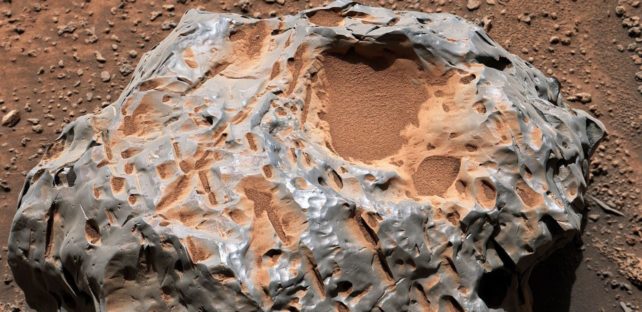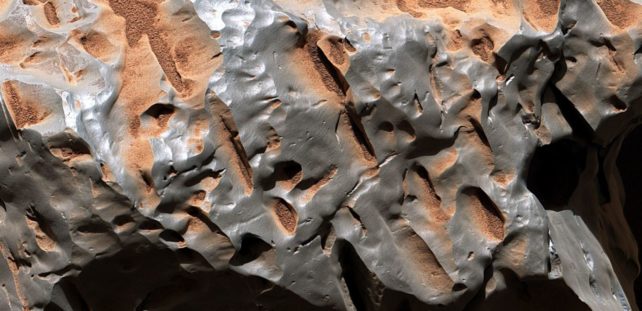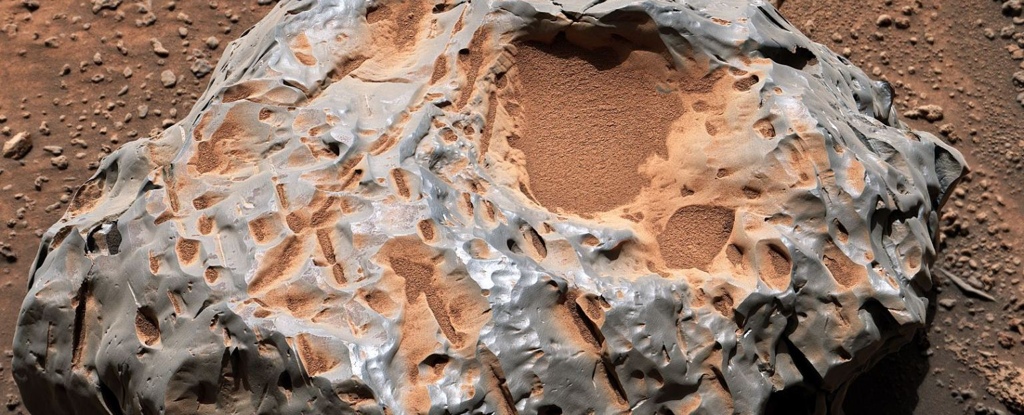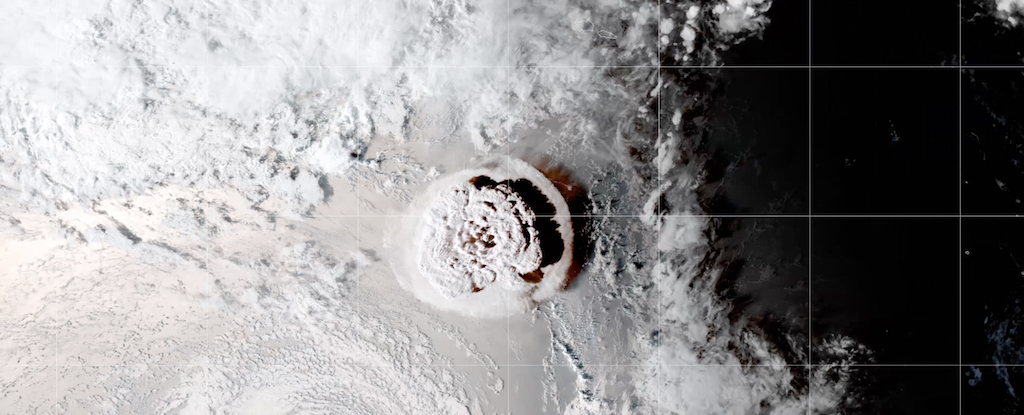MSL Curiosity goes about his business explorations Mars. The high-tech rover is currently exploring the sulfate-bearing unit on Mt. Sharp, the central peak in Mars’ Gale Crater. Serendipity placed a metal meteorite in its path.
The meteorite consists mainly of nickel and iron and has a name: cocoa. (Chocolate comes from cocoa.) Cocoa is not very large; it is only about 30 cm wide.
Curiosity has encountered several meteorites since landing in Gale Crater in August 2012.
Cacao stands out visually from its surroundings. While the Martian surface is red from oxides, the meteorite is dark gray and looks metallic. It’s also smooth and rounded, obvious signs it’s been through an atmosphere.
The image is a composite of six individual images captured by the rover’s mastcam. Curiosity captured the images on January 27, 2023, the 3,724. Mars Day or Sol of the Mission. The colors in the image have been corrected to match the lighting conditions as seen by human eyes on Earth.
The grooves and pits are named regmaglypts. They are particularly interesting on iron meteorites. They formed as cacao traveled through the atmosphere.
Although the Martian atmosphere is much thinner than Earth’s, it still creates enough friction to heat the meteorite’s surface. The regmaglypts are likely produced by hot vortices of gas that melted rock as it traveled through the atmosphere.
The meteorite may have been on the surface of Mars for a long time, but no one knows for sure.

This isn’t the first meteorite rover found on Mars. In 2016, MSL Curiosity found another metal meteorite the size of a golf ball called Egg Rock. It examined this with its ChemCam instrument to determine its composition.
The grid pattern of five small white dots shows where the instrument’s laser hit the rock.
Iron-nickel meteorites are the rarest type of meteorite, accounting for about six percent of observed falls. But because of their telltale looks, they’re overrepresented in collections. That’s because they’re more likely to survive passage through an atmosphere and are more resilient to the elements, even on Mars.
Most iron-nickel meteorites come from the cores of shattered planetesimals that formed in the early solar system. These objects were large enough to distinguish when melted. They formed a core of dense iron and nickel, much like Earth.
But life as a planetesimal was risky, and many of them were smashed into asteroids. That is the probable history of cacao.
This is what makes meteorites, and metal meteorites in particular, so interesting from a scientific point of view. They can go back billions of years to the beginning of the solar system.

On Earth, meteorites like cocoa were mankind’s first source of iron. Long before melting, people collected these meteorites whenever they could and used them to make knives and other implements. King Tut was buried with a dagger made of meteorite iron, and the Inuit in the Arctic and Greenland also used meteorite iron.
They repeatedly visited a particularly large iron meteorite called the Cape York Meteorite. They hammered chunks of iron into harpoon points and began their own Iron Age, ignorant of smelting. They even traded iron with other groups of people.
But only our robotic researchers will ever see Cacao.
Cocoa is just an interesting curiosity for MSL Curiosity. Curiosity’s mission is to investigate Gale Crater, Mt. Sharp and features such as the sulphurous unit. The unit is rich in saline minerals formed in the presence of water.
By exploring the area, Curiosity sheds light on the ancient history of Mars and how it dried up to become the parched wasteland it is now.
Finding cocoa is just a bonus.
This article was originally published by universe today. To read the original item.





